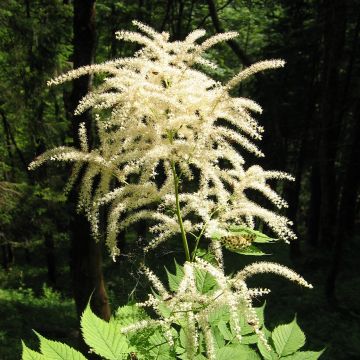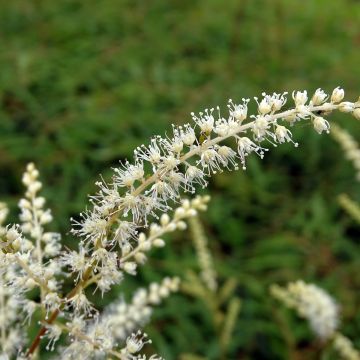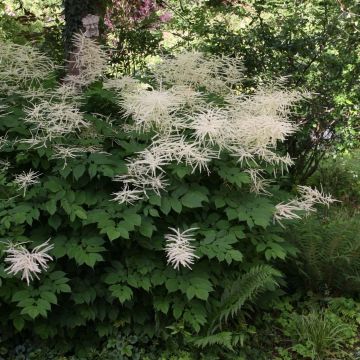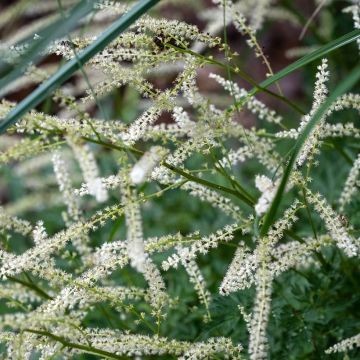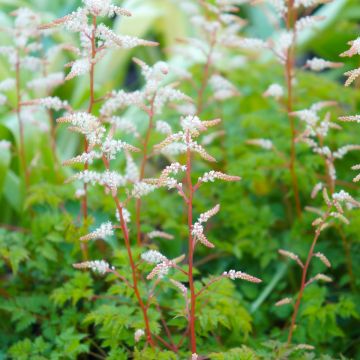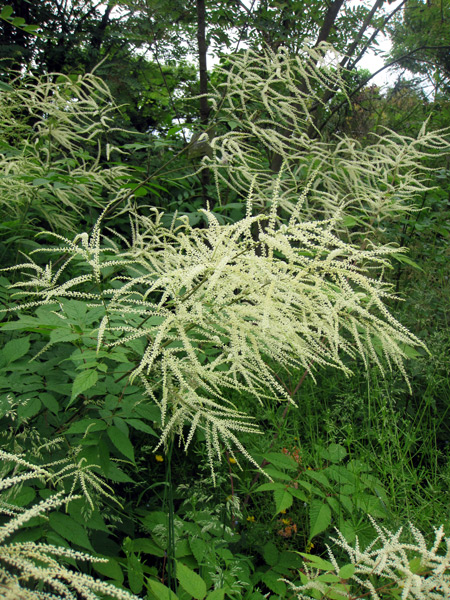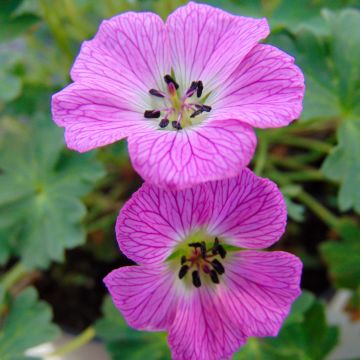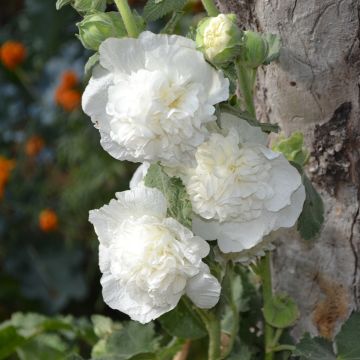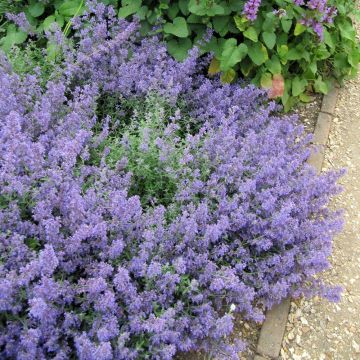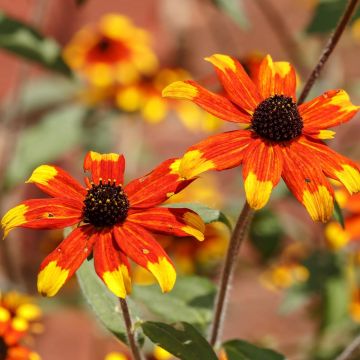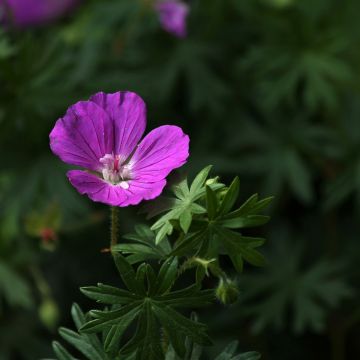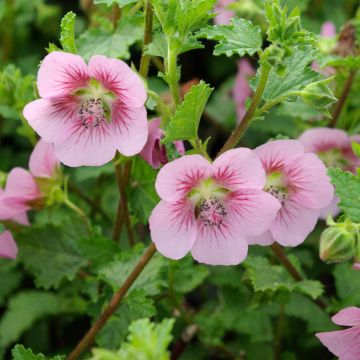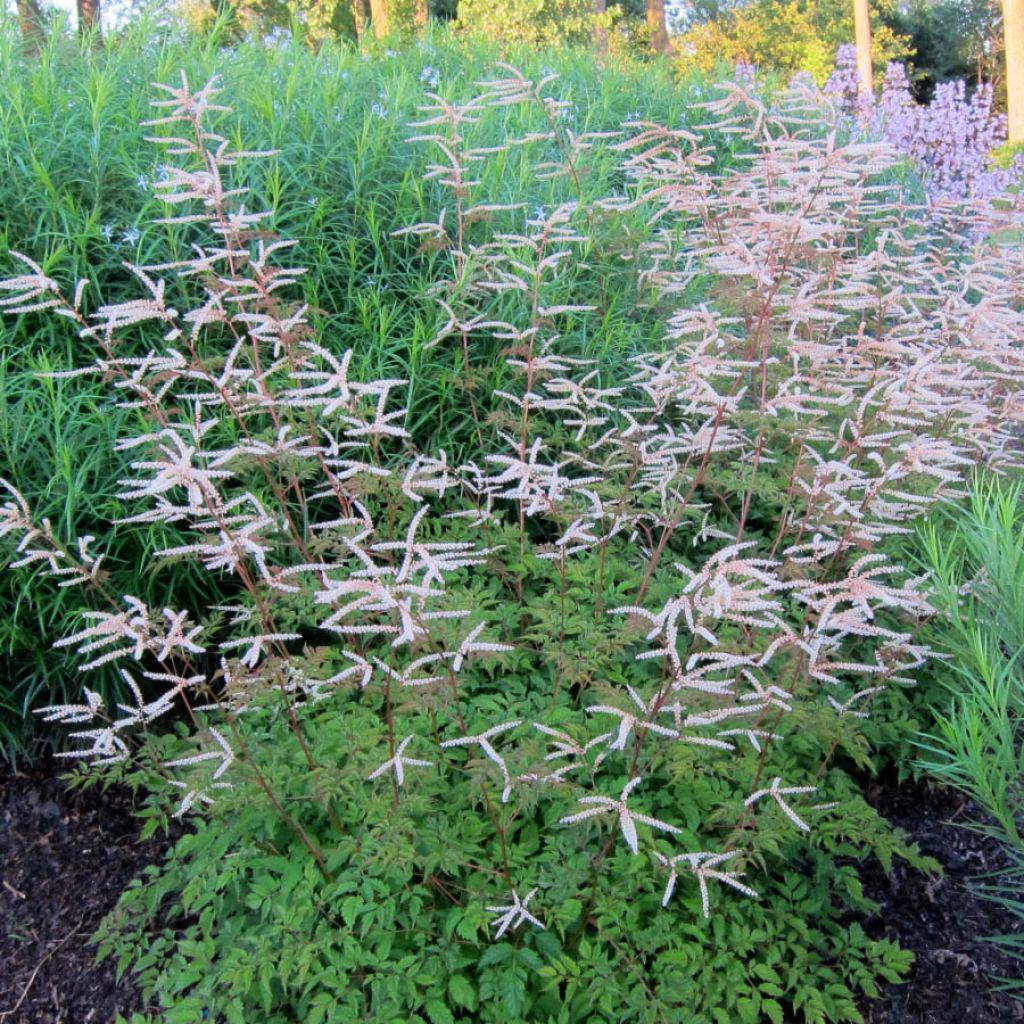

Aruncus Horatio
View more pictures
Hide images
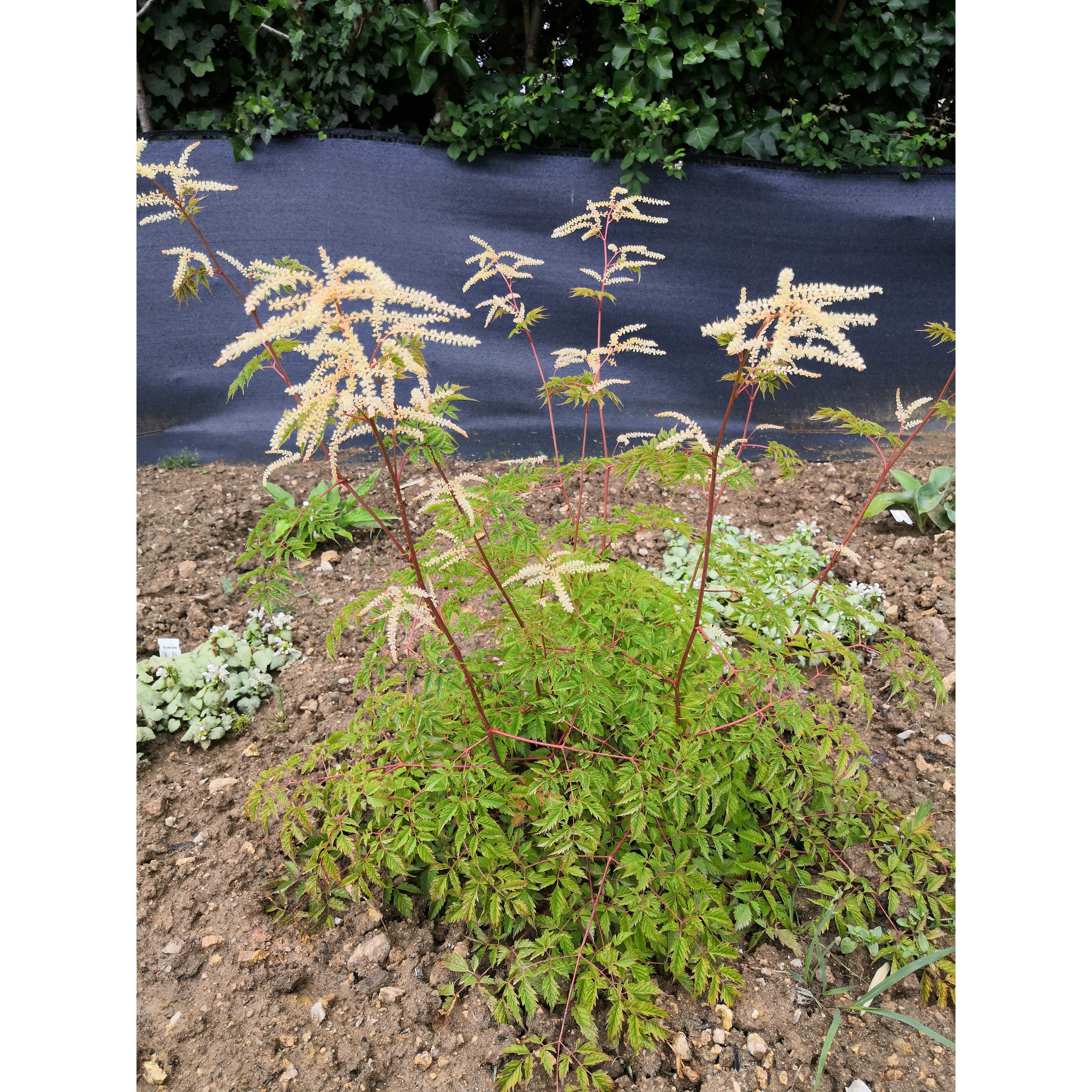
Armelle-Marie V.

Armelle-Marie V. • 87 FR
Aruncus Horatio
Aruncus aethusifolius x dioicus Horatio
Goat's Beard
Well established even when in flower.
Lucinda, 07/09/2024
Special offer!
Receive a €20 voucher for any order over €90 (excluding delivery costs, credit notes, and plastic-free options)!
1- Add your favorite plants to your cart.
2- Once you have reached €90, confirm your order (you can even choose the delivery date!).
3- As soon as your order is shipped, you will receive an email containing your voucher code, valid for 3 months (90 days).
Your voucher is unique and can only be used once, for any order with a minimum value of €20, excluding delivery costs.
Can be combined with other current offers, non-divisible and non-refundable.
Home or relay delivery (depending on size and destination)
Schedule delivery date,
and select date in basket
This plant carries a 12 months recovery warranty
More information
We guarantee the quality of our plants for a full growing cycle, and will replace at our expense any plant that fails to recover under normal climatic and planting conditions.

Would this plant suit my garden?
Set up your Plantfit profile →
Description
The Aruncus 'Horatio' is a remarkable hybrid variety of Goat's Beard in every respect. Firstly, for its compact and graceful habit, and secondly, for its abundant summer flowering in tapered and elegant creamy-white panicles held upright towards the sky, which fade beautifully. As if that wasn't enough, this cultivar combines the qualities of its two parents: it is of modest size and very hardy, and its superb fern-like foliage ignites in autumn, turning coppery-bronze. It is a beautiful perennial for shady areas of gardens, particularly near water features.
The Horatio Goat's Beard is a type of perennial plant that grows in a bushy clump. It is a member of the Rosaceae family. The plant spreads through rhizomes and stolons. When spring arrives, it begins to grow. This hybrid is a cross between the compact and small-sized Aruncus aethusifolius, native to Korea, and the majestic Aruncus dioicus (sylvestris), a common plant in temperate and subarctic regions of the Northern Hemisphere. 'Horatio' will reach a height of 80 cm (32in) when in flower, with foliage reaching 40 cm (16in), and will spread to 50 cm (20in). It grows rapidly and has a good lifespan. Flowering occurs in June-July in thin plume-like panicles measuring 15 cm (6in) long, held upright and attached to reddish-brown peduncles. The panicles are composed of tiny creamy-white flowers, both soft and bright. Its foliage is deciduous, as delicate as that of a fern. The arching leaves are compound, highly divided, with finely toothed leaflets. The leaf-bearing stems are tall and have long petioles. Light green in spring and summer, the foliage takes on magnificent hues in September-October, just like the flower heads.
It is a plant that prefers cool conditions; it can tolerate sun as long as the soil is not too dry, especially in summer. It adapts well to clay soils, provided they are healthy and well-amended. The 'Horatio' Goat's Beard is particularly suitable for cottage gardens, natural gardens, woodland gardens, and water features. It can easily be grown in pots or troughs alongside Astilbes, to which it bears a close resemblance. It looks stunning when paired with the grey foliage of 'Berggarten' or 'Tricolor' sage and the coppery strands of Carex comans 'Bronze'. It creates beautiful scenes with Monkshood, Foxgloves, ferns, and other shade-loving perennials and streamside plants. In large borders, it forms a gorgeous flower bed when planted with rhododendrons, azaleas, and hydrangeas. It also makes a lovely flower for summer bouquets.
Aruncus Horatio in pictures
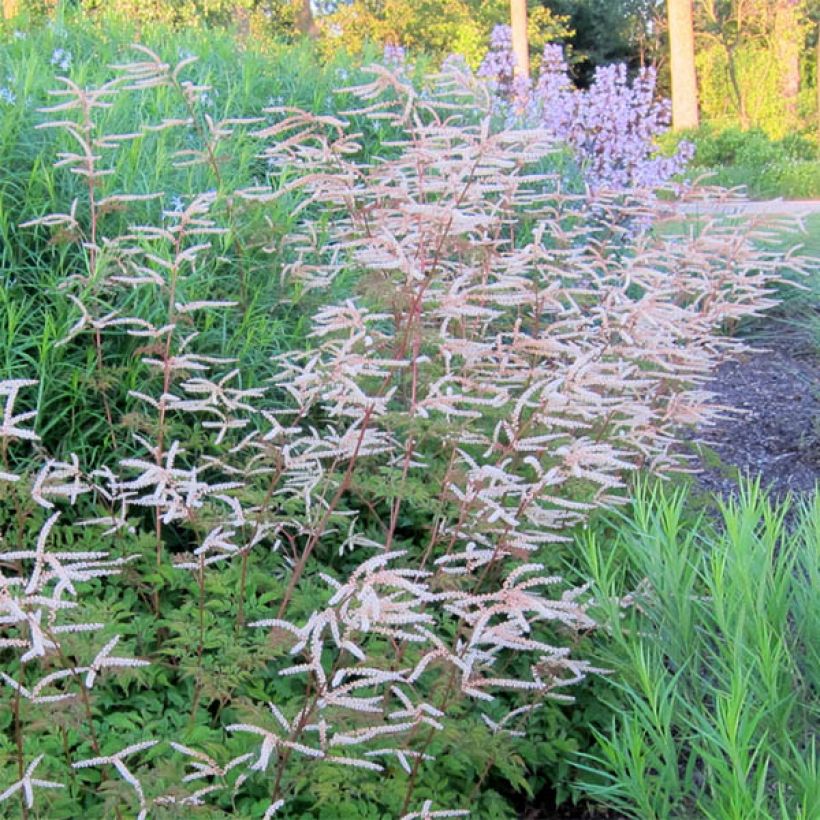



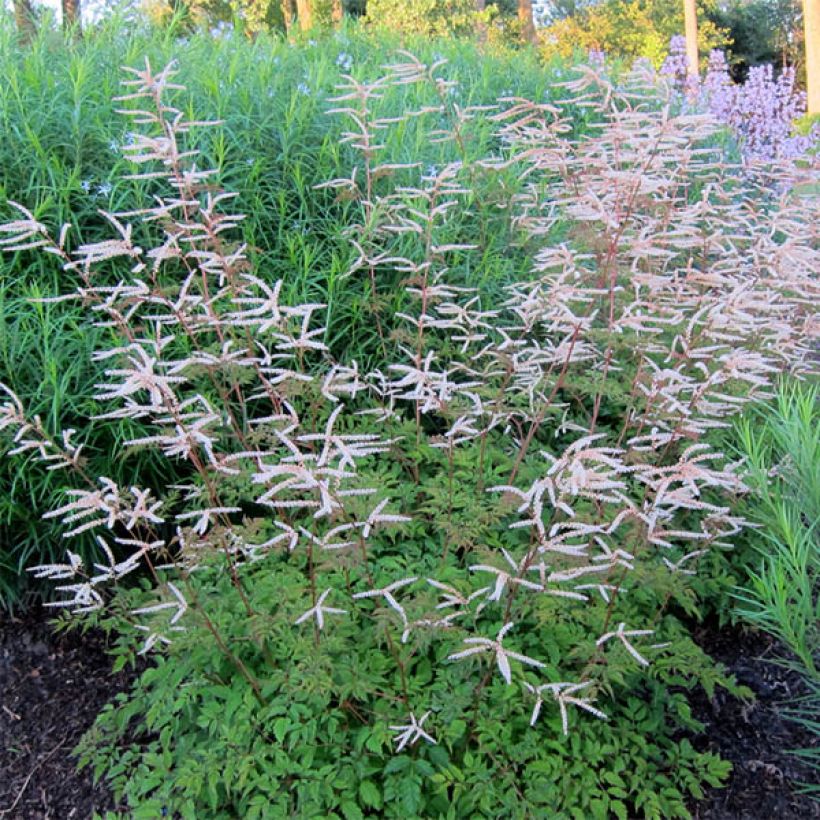

Flowering
Foliage
Plant habit
Botanical data
Aruncus
aethusifolius x dioicus
Horatio
Rosaceae
Goat's Beard
Cultivar or hybrid
Other Aruncus
View all →Planting and care
For the 'Horatio' hybrid Aruncus plant, the amount of sun it needs depends on the soil's freshness. It grows best in moist to wet soil, rich in humus, with a neutral to acidic pH. To keep it healthy, avoid letting it dry out during summer. It also grows well in clay soil if it's healthy and well-amended. For the best growth, plant it in partial shade or a sunny location that's not too hot. Daily watering is necessary in hot summers, and it should be protected from strong winds. After the plant flowers, it's recommended to prune the faded flowers. You can leave the flower stems to decorate the garden during winter but remove them in the following spring. Don't work the soil near the plant since the rhizomes develop on the surface. The plant is disease-resistant and rarely attacked by insects.
Planting period
Intended location
Care
Planting & care advice
-
, onOrder confirmed
Reply from on Promesse de fleurs
Similar products
Haven't found what you were looking for?
Hardiness is the lowest winter temperature a plant can endure without suffering serious damage or even dying. However, hardiness is affected by location (a sheltered area, such as a patio), protection (winter cover) and soil type (hardiness is improved by well-drained soil).

Photo Sharing Terms & Conditions
In order to encourage gardeners to interact and share their experiences, Promesse de fleurs offers various media enabling content to be uploaded onto its Site - in particular via the ‘Photo sharing’ module.
The User agrees to refrain from:
- Posting any content that is illegal, prejudicial, insulting, racist, inciteful to hatred, revisionist, contrary to public decency, that infringes on privacy or on the privacy rights of third parties, in particular the publicity rights of persons and goods, intellectual property rights, or the right to privacy.
- Submitting content on behalf of a third party;
- Impersonate the identity of a third party and/or publish any personal information about a third party;
In general, the User undertakes to refrain from any unethical behaviour.
All Content (in particular text, comments, files, images, photos, videos, creative works, etc.), which may be subject to property or intellectual property rights, image or other private rights, shall remain the property of the User, subject to the limited rights granted by the terms of the licence granted by Promesse de fleurs as stated below. Users are at liberty to publish or not to publish such Content on the Site, notably via the ‘Photo Sharing’ facility, and accept that this Content shall be made public and freely accessible, notably on the Internet.
Users further acknowledge, undertake to have ,and guarantee that they hold all necessary rights and permissions to publish such material on the Site, in particular with regard to the legislation in force pertaining to any privacy, property, intellectual property, image, or contractual rights, or rights of any other nature. By publishing such Content on the Site, Users acknowledge accepting full liability as publishers of the Content within the meaning of the law, and grant Promesse de fleurs, free of charge, an inclusive, worldwide licence for the said Content for the entire duration of its publication, including all reproduction, representation, up/downloading, displaying, performing, transmission, and storage rights.
Users also grant permission for their name to be linked to the Content and accept that this link may not always be made available.
By engaging in posting material, Users consent to their Content becoming automatically accessible on the Internet, in particular on other sites and/or blogs and/or web pages of the Promesse de fleurs site, including in particular social pages and the Promesse de fleurs catalogue.
Users may secure the removal of entrusted content free of charge by issuing a simple request via our contact form.
The flowering period indicated on our website applies to countries and regions located in USDA zone 8 (France, the United Kingdom, Ireland, the Netherlands, etc.)
It will vary according to where you live:
- In zones 9 to 10 (Italy, Spain, Greece, etc.), flowering will occur about 2 to 4 weeks earlier.
- In zones 6 to 7 (Germany, Poland, Slovenia, and lower mountainous regions), flowering will be delayed by 2 to 3 weeks.
- In zone 5 (Central Europe, Scandinavia), blooming will be delayed by 3 to 5 weeks.
In temperate climates, pruning of spring-flowering shrubs (forsythia, spireas, etc.) should be done just after flowering.
Pruning of summer-flowering shrubs (Indian Lilac, Perovskia, etc.) can be done in winter or spring.
In cold regions as well as with frost-sensitive plants, avoid pruning too early when severe frosts may still occur.
The planting period indicated on our website applies to countries and regions located in USDA zone 8 (France, United Kingdom, Ireland, Netherlands).
It will vary according to where you live:
- In Mediterranean zones (Marseille, Madrid, Milan, etc.), autumn and winter are the best planting periods.
- In continental zones (Strasbourg, Munich, Vienna, etc.), delay planting by 2 to 3 weeks in spring and bring it forward by 2 to 4 weeks in autumn.
- In mountainous regions (the Alps, Pyrenees, Carpathians, etc.), it is best to plant in late spring (May-June) or late summer (August-September).
The harvesting period indicated on our website applies to countries and regions in USDA zone 8 (France, England, Ireland, the Netherlands).
In colder areas (Scandinavia, Poland, Austria...) fruit and vegetable harvests are likely to be delayed by 3-4 weeks.
In warmer areas (Italy, Spain, Greece, etc.), harvesting will probably take place earlier, depending on weather conditions.
The sowing periods indicated on our website apply to countries and regions within USDA Zone 8 (France, UK, Ireland, Netherlands).
In colder areas (Scandinavia, Poland, Austria...), delay any outdoor sowing by 3-4 weeks, or sow under glass.
In warmer climes (Italy, Spain, Greece, etc.), bring outdoor sowing forward by a few weeks.































